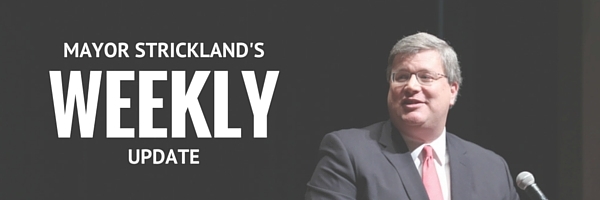Weekly Update: On jobs, wages, and economic momentum
Memphis sent this bulletin at 06/21/2019 01:55 PM CDTFriends,
As much as we love the feeling of momentum that comes with shiny new buildings and new life in old ones, there’s a simple, core reason we work so hard at City Hall to accelerate our momentum: Jobs.
A good job that pays well can be a ticket out of poverty. As we confront our challenges head-on — like when we updated you on crime reduction efforts just last week — we know that better jobs lead to better outcomes on all of those fronts.
To that end, I’m sharing three points with you today that you may not know about the current state of jobs and our local economy, particularly with momentum we’ve seen in just the past year or two.
We’re seeing wage growth ahead of some of our peer cities. With all these new jobs, do they pay better, too? It’s a question I recently posed to our Office of Performance Management, asking them to crunch the publicly available jobs and wage numbers from the federal Bureau of Labor Statistics.
What Craig and Sarah’s team at OPM found was pretty interesting: In the fourth quarter of 2018, wage growth in Shelby County (this data is only available at the county level) the past three years was on par with counties that contain cities like Charlotte and Atlanta — and actually ahead of Dallas, Nashville, and Houston.
That’s a promising sign. And as we work to do our part to lift the standard of living and reduce poverty, it’s positive movement for our community.
Furthermore, we worked with EDGE (the Economic Development Growth Engine) a few months back on another major step forward for increased pay for Memphians: We recommended, and the EDGE board approved, an increase in the minimum hourly wage a tax incentive applicant must pay in order to receive an incentive on that job, moving it from $12 an hour to $13 an hour. (The employer must also provide subsidized health insurance.)
That’s nearly $2/hour better than the hourly living wage for Memphis, which is $11.02.
Speaking of incentives, they help us drive this growth. I’m proud to report that since Jan. 1, 2016, EDGE, with my approval and the County mayor’s approval on each deal, has approved 41 payment-in-lieu-of-taxes (PILOT) tax incentive arrangements, creating or retaining a projected 7,753 jobs that pay an average wage of $54,797 and prompt a $142 million spend with local minority and small businesses. (And that doesn’t even count other meaningful programs, such as our inner city economic development loans, tax increment financing districts and the like.)
Here's a map of 2016-19 PILOT projects, which shows how they're distributed all across our city:

Remember, the City and County usually receive more tax revenue by granting a PILOT than if we hadn’t. PILOTs are not cash grants. PILOTs are effectively reduced tax payments to make our city, in a heavily property tax-reliant state, more competitive on projects. Most of the time, the attention from the media focuses on the amount of that reduction — and not on the amount of additional taxes we’ll receive when compared to if we had never granted the incentive and the deal never happened.
This week’s announcement of 51 new jobs paying $47,380 at Vossloh AG in South Memphis is a good example. Sure, Vossloh AG will receive $653,465 in benefit from the incentive — but the City and County will receive $2.2 million.
Extra tax revenue and new, good-paying jobs in South Memphis? I’ll take it. (And next time you hear someone criticize PILOTs, I hope you’ll ask them why they’re against more jobs and more tax revenue!)
Our economic indicators are as strong as they’ve been in some time. Consider this: While it is a preliminary number that’s subject to revision, the most recent unemployment rate for the City of Memphis is 3.8 percent. That's the lowest unemployment rate for Memphis since at least 1990, which is as far back as the Bureau of Labor Statistics keeps those numbers online.
Even better, April was the 27th consecutive month for which our unemployment rate was less than 6 percent. To put it in perspective, unemployment in Memphis stayed above 10 percent every month between January 2009 to October 2011, at the height of our slow recovery from the recession.
In April, preliminary BLS numbers had us with 288,465 employed Memphians — almost exactly 20,000 more than the month in which I took office. That would be the most employed Memphians in any month since July 2008, just before the bottom fell out of the economy.
And recently, Bloomberg said Memphis had the No. 1 job growth of any metro area in 2018.
—
Again, I hope you’ve learned some facts about the good signals we’re starting to see in our economy. As this momentum continues, we’ll begin to see more and more of its impact in the challenges we face each and every day.
Yours,



